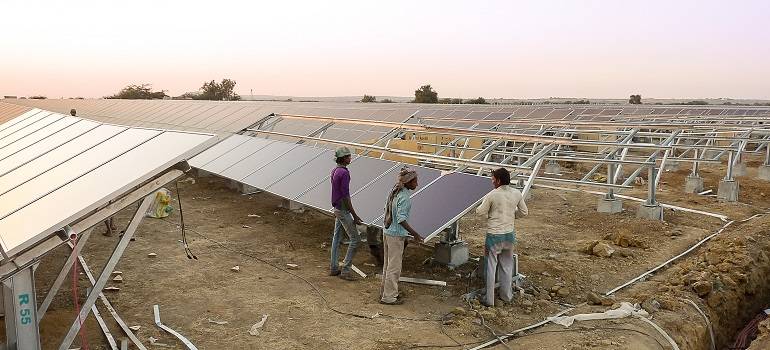 Small African nations, which have or are yet to ratify the International Solar Alliance (ISA), are looking up to Indian support to build up solar capacity, their Ambassadors said at an expo here.
Small African nations, which have or are yet to ratify the International Solar Alliance (ISA), are looking up to Indian support to build up solar capacity, their Ambassadors said at an expo here.
Referring to the small population size yet high scope for solar energy and allied businesses in her country, Gambian Ambassador Jainaba Jagne said that it was seeking technical support from India through ISA.
“Ours is a small nation with a population of only 1.9 million. Now, when we say this, people often roll their eyes or laugh, but the fact is that there is huge opportunity for business in solar sector.
“Though we have not ratified the ISA yet, we are seeking technical support from India through International Solar Alliance.”
She was speaking at the Fourth Smart Cities India 2018 Expo, underway at the Pragati Maidan here with support from the Indian government.
She said that with only 70 per cent electrification in urban area and 15 per cent in rural areas, there were huge business opportunities for solar companies in Gambia.
Meanwhile, official representatives from Mauritius, a small African nation which is among founder-members of ISA, said that with climate change in mind, Mauritius also aimed at increasing share of solar power in its energy needs and reduce dependence on coal.
“Mauritius’ population is about 1,000 times smaller than India — you have 1.2 billion people, we have 1.2 million. Our peak power demand is 700 MW, of which 80 per cent comes from coal. Here in India and through the ISA, we are seeking expertise in terms of building capacity,” said Seewaj Nundlall, Cousellor Investment and Trade, Mauritius Embassy.
Backed and conceptualised by India, the ISA has 121 prospective member-countries and territories. Of the 121 member-nations of ISA, 60 have signed the treaty while about 30 have ratified it.
The ISA was launched jointly by Prime Minister Narendra Modi and then French President Francois Hollande at the landmark 2015-Paris Climate Agreement meeting.
India has 20 Giga Watt of installed solar capacity — one of the fastest growing in the world. The country has increased its solar power capacity by about eight times over the past four years.
India’s wind power generation capacity is 32.8 GW. It aims to achieve 175 GW of clean energy by 2022, of which 100 GW will be solar.
Source: IANS

